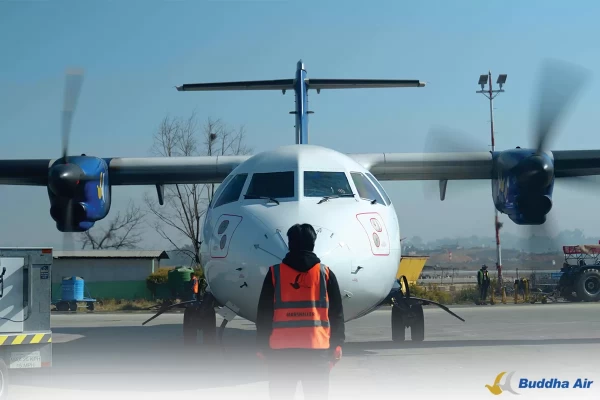Everything You Need to Know About Aircraft Cockpit in 2025

Have you ever looked at the front of an aircraft and wondered what lies behind that mysterious door the crew disappears into? That hidden space is called the cockpit, often described as the heart and brain of an aircraft. It’s where the magic of flight begins and ends, where skilled pilots sit surrounded by buttons, screens, and controls, guiding the plane from takeoff to landing.
Whether you’re gazing at a cockpit plane from a window seat or have seen dramatic movie scenes involving the cockpit, this area is far more complex and vital than it appears. In this guide, we’ll take you inside the world of the cockpit, explaining its purpose, who works there, and the high-tech systems it houses.
What is a Cockpit?
The cockpit is the command centre of an aircraft that is tightly organised space packed with technology that allows pilots to control everything from altitude to airspeed. Positioned at the front of the aircraft, it includes all necessary instruments for navigation, communication, flight monitoring, and engine control. The cockpit of a plane is not only about flashy buttons and digital screens; it’s about precision, safety, and performance. Modern aircraft cockpits feature glass cockpit technology with LCD displays, autopilot systems, and heads-up displays (HUDs) that give pilots real-time data on everything from weather to terrain. This high level of automation and integration helps reduce pilot workload and enhances flight safety.
Who Works in a Cockpit?
The cockpit is primarily operated by trained aviation professionals who ensure the aircraft's smooth and safe operation.
There is the Captain, the Pilot-in-Command, the senior pilot responsible for the overall control and decision-making of the flight.
With the Captain, the First Officer aka Co-Pilot assists with navigation, communication, and aircraft control, taking over if needed.
Main Components of a Cockpit and Their Functions
The cockpit is equipped with a wide range of sophisticated systems designed to give pilots full control over the aircraft. These tools aren’t just buttons and screens as they represent a carefully designed ecosystem that supports flight safety, navigation, and communication under all conditions.
1. Primary Flight Display (PFD)
The PFD is the pilot’s primary visual reference during flight. It presents vital flight information like altitude, airspeed, attitude (the aircraft’s orientation relative to the horizon), heading, and rate of climb or descent. For example, during approach and landing, the PFD helps pilots maintain the correct glide slope and speed, needed for a smooth touchdown.
2. Navigation Display (ND)
The ND provides a real-time picture of the aircraft’s route, air traffic in the vicinity, terrain, weather patterns, and navigational waypoints. It helps pilots stay aware of their position during long-haul or cross-continental flights. For instance, if a thunderstorm is detected ahead on the ND, the crew can request a reroute from ATC (Air Traffic Control) in advance, ensuring a safer and smoother ride for passengers.
You may also read: Air Traffic Control (ATC): How It Ensures Safe Skies
3. Control Yoke/Stick
Depending on the aircraft, pilots steer using a control yoke or a side-stick controller, depending on the type of aircraft. This is the equivalent of a car’s steering wheel, used to pitch the nose up or down and bank left or right. During takeoff and landing, pilots make continuous, small adjustments using the yoke or stick to maintain the desired flight path, especially in turbulent or windy conditions.
4. Throttle Levers
Throttle levers are used to control engine power output. These levers are vital during takeoff, climb, descent, and go-around manoeuvres. For instance, when a pilot initiates takeoff, the throttle is pushed forward to command maximum thrust. In emergencies such as an engine failure, pilots adjust the throttle to stabilize the aircraft while preparing for a safe landing.
5. Autopilot System
Modern aircraft can fly for long durations under autopilot, which manages tasks like maintaining altitude, course, and speed. However, pilots remain fully engaged, monitoring systems and ready to take manual control if needed. During long-haul flights, especially international flights, the autopilot significantly reduces pilot fatigue and increases precision in cruise settings.
6. Radio Communication Panel
This panel allows two-way voice communication between the cockpit and air traffic controllers, ground operations, and other aircraft. It’s critical for relaying instructions, clearance for takeoff/landing, and updates on weather or airspace changes. For instance, a pilot might receive a last-minute runway change while taxiing, communicated via this system.
Also read: Aircraft Taxiing - How it Keeps Our Skies Safe and Smooth
7. Overhead Panel
Situated above the pilots, this panel includes switches and indicators for systems like fuel pumps, cabin lighting, anti-icing, de-icing, and electrical circuits. It’s also where emergency procedures, such as engine fire suppression, are activated. The overhead panel can look intimidating, with dozens of switches, but each has a clearly defined role in managing aircraft systems.
8. Flight Management System (FMS)
Think of the FMS as the aircraft’s brain. It takes input from navigation data, weather systems, and performance charts to help optimize the flight path. Pilots enter the flight plan into the FMS before departure, and it calculates the most fuel-efficient route, optimal cruising altitude, and even descent profiles. In emergencies, it helps pilots recalculate alternate routes quickly.
FAQs
What controls are in a cockpit?
A cockpit contains essential controls like the control yoke (or joystick), throttle levers, autopilot system, navigation displays, and communication systems. These controls allow pilots to manage speed, altitude, direction, and overall flight operations.
Who is in the cockpit?
The cockpit is operated by the pilot (captain) and co-pilot (first officer). In older aircraft, a flight engineer might also be present to monitor systems. These professionals work as a team to ensure a safe and efficient flight.
